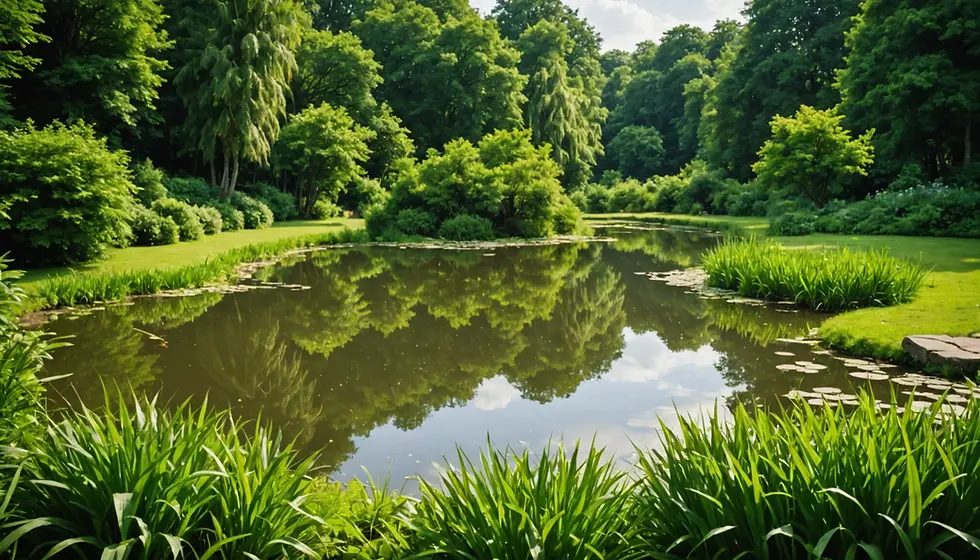Winter Landscaping: Keeping Your Yard Beautiful Through the Cold Months
- christianbrothers7
- Oct 30, 2024
- 3 min read

Winter often makes people think of dormant lawns and barren gardens, but there are plenty of ways to keep a landscape thriving and looking great even in the colder months. With a few adjustments and some creative choices, you can have a winter landscape that’s just as appealing and lively as it is in the spring or summer. Here are some tips and ideas to keep your yard beautiful and healthy this winter.
Winter-Proofing Your Lawn and Garden
Start by preparing your landscape for the chilly months. Winterizing is crucial for protecting your plants and hardscaping from potential damage caused by freezing temperatures.
• Prune and Protect: Trim any damaged branches from trees and shrubs to prevent breakage under the weight of snow. For delicate shrubs, wrap them in burlap to shield them from ice and frost.
• Lawn Care: Fertilize in late fall to give your grass the nutrients it needs to survive the winter. Avoid excessive foot traffic on frosty grass, which can damage fragile blades.
• Mulching: Add a layer of mulch around trees, shrubs, and garden beds to protect roots and lock in warmth. This will help insulate the soil and reduce water loss.
Add Winter-Friendly Plants
Even with snow covering the ground, you can incorporate plants that add color and texture to your yard. Some shrubs and evergreens thrive in cold weather, making your yard look lush and vibrant all winter long.
• Evergreens: Varieties like spruce, pine, and juniper offer rich greens and blues that stand out in winter’s pale landscape.
• Winter-Blooming Plants: Certain flowers like hellebores, winterberry holly, and witch hazel provide bursts of color even in cold temperatures.
• Ornamental Grasses: Tall grasses like blue fescue or feather reed grass retain their texture and height, even in the snow, adding visual interest to the yard.

Hardscaping and Accents for Winter Appeal
Hardscaping features and garden accents offer structure and charm that carry a landscape through the colder months. Think about adding or enhancing these elements for winter-specific appeal.
• Stone Pathways: A pathway with stepping stones or gravel can add functionality and beauty, even when surrounded by snow.
• Lighting: Since winter days are short, outdoor lighting becomes essential. Solar-powered lights, LED string lights, or lanterns can illuminate paths and highlight trees and architectural features.
• Water Features: While traditional fountains may not work in freezing temperatures, water features like stone sculptures or a bubbler fountain can be adapted to withstand winter and create visual appeal.
Snow Removal with Care
While snow removal is necessary for driveways, walkways, and patios, be mindful of how you clear it from landscaped areas. Using gentle methods will help prevent harm to plants and hardscapes.
• Avoid Salt: Salt can be harsh on plants and soil. Opt for sand or eco-friendly de-icing solutions instead.
• Proper Shoveling: Be careful not to pile snow directly onto shrubs and delicate plants. The weight of the snow can cause breakage and damage.
• Snow as Insulation: Don’t feel pressured to clear every bit of snow off your lawn. A light layer of snow can act as an insulating blanket, protecting plants from extreme cold.
Plan for Spring
Winter is an ideal time to think ahead. As plants go dormant, it’s easier to map out new garden features, redesign flower beds, or plan additions for spring.
• Landscape Design: Use the winter months to envision new layouts or designs. You can even work with a landscaper to plan projects that can start early next season.
• Pruning: Winter pruning helps prepare trees and shrubs for a healthy spring. Aim to prune during the colder months when the plants are dormant for better results.
• Planting Bulbs: Some bulbs, like tulips and daffodils, need the winter chill to thrive in spring. If you haven’t already, consider planting these in early winter before the ground freezes.
Winter landscaping isn’t just about maintenance—it’s an opportunity to create a unique and beautiful outdoor space year-round. By winterizing effectively, choosing resilient plants, adding accents, and planning for spring, you’ll keep your yard not only surviving but thriving all season long. Embrace the beauty of winter landscapes, and your yard will be a standout in every season.





Comments